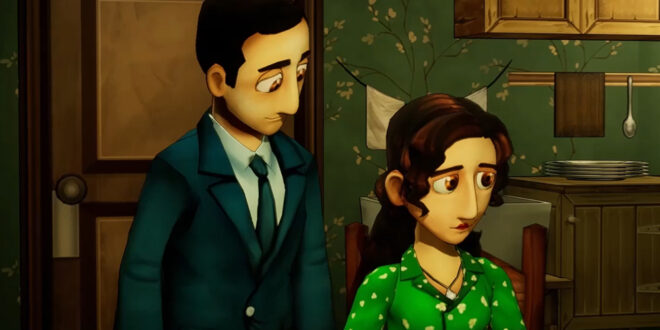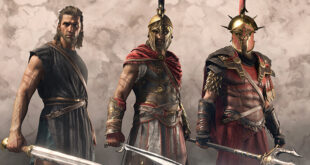Can video games tell stories about the Holocaust?Can this medium encourage the audience to relate and care more?
I absolutely believe so. That’s why I self-funded, directed and released the Holocaust videogame “The Light in the Darkness,” which is currently available on PS5, PS4 and PC.
One of my core issues with education on the Holocaust is that those murdered are treated as numbers, not human beings. The stories of their lives should be more than the account of how the Nazis brutally murdered them.
The Holocaust in France is not often depicted in American movies, and the stories of Sephardic Jews (Jews from Spain and Iberia) during the Shoah are usually left out of the narrative.
I approached creating “The Light in the Darkness” through a lens that focused on the Jewish characters rather than the perpetrators of Vichy France.
Hollywood often portrays Nazis as main characters, which can make the audience believe they were just “bad guys” that aided in the Holocaust. But it was European society that allowed it to happen and, at times, even encouraged it.
Throughout the game, characters who were once friends soon turn on families. This allows players to witness the ways in which antisemitism spread like a poison across France, and how quickly France went from embracing Jews to Vichy regime deporting them to their deaths.
Although the main story is about a Polish Jewish family that lives in France, my favorite character that I created, and one that is inspired by the many Sephardic Jews of France, is Bernard.
Later in the game, the player finds out Bernard’s real name is Messaoud and that he’s from Algeria. After the Constantine riots against Jews, he moves to France for a better life and becomes culturally French — to the point of near-comedic relief at moments.
Despite Bernard being even more French than the average Frenchman and converting to Christianity, this does not save him from the fate of being murdered by the Nazis.
Bernard is one of the most important characters in “The Light in the Darkness.” Because of him, I was able to show that the Holocaust was a racial genocide and not a religious one, as many politicians and Americans erroneously believe, as well as delve into how antisemitism was — and is — not exclusive to Europe. Antisemitism exists everywhere.
Many Hollywood movies recount survivors’ stories, and, in a way, this delivers some hope, a happy ending. To me, as a European, the Nazis were successful in their collective mission: They wiped out Jewish life from Europe. This is a fact that many Americans do not understand.
For all the characters in this video game to survive would be a distortion of history. The game’s tragic ending is the reason that it has been so impactful.
One of the last shots is of Samuel, the son of the game’s main family, being pushed onto a train to Auschwitz, his toy fox falling on the ground. With text, I inform the video game player that Samuel does not survive Auschwitz.
The game’s next scene depicts what each character’s life would have been like if the Holocaust didn’t happen. The end credits are positioned next to photos of the children that France deported and killed.
Gamers cannot contain themselves once the credits hit. They start crying. They are made acutely aware that the Holocaust was, in fact, an industrial genocide. And that it was successful.
Because of empathy and having grown attached to these characters, this realization prompts gamers to talk about hatred in the world and how we need to be better human beings. It changes them. It touches them emotionally.
A lot of people believed that gamers would never want to play a video game about the Holocaust, that it would simply never work. They were wrong.
Per the statistics available on Sony’s PlayStation 5, “The Light in the Darkness” has an over 43 percent completion rate (the average video game has around 10-20 percent). The number of people who have downloaded the game is more than the number of annual visitors to all Holocaust Museums in the state of California. And it will continue to grow. Schools worldwide will begin using it next year, and I will continue to bring it to every video game console available.
The game was also a success in Saudi Arabia, where the game is scoring some of its highest usage numbers, and the reason that I translated it to Arabic. For many, the “The Light in the Darkness” is the first time players have seen Jewish characters or learned about the Holocaust.
While I am scared of rising Nazism in the States, I believe video games can help decrease hatred. We are bigger than movies and music, and it is our duty to use this medium to not only educate but also to make people more empathetic.
I will continue to explore this realm, as I did with creating the first digital Holocaust Museum within Fortnite. Per the Conference on Jewish Material Claims Against Germany, 80 percent of Americans have not visited a Holocaust museum. ‘
With videogames such as “The Light in the Darkness,” that museum can now come to them.
Luc Bernard is a British game designer best known for creating the video games “Death Tales,” “Eternity’s Child,” and “Mecho Wars” and Fortnite’s in-game Holocaust Museum.
This article is part of Variety’s Antisemitism and Hollywood package.



